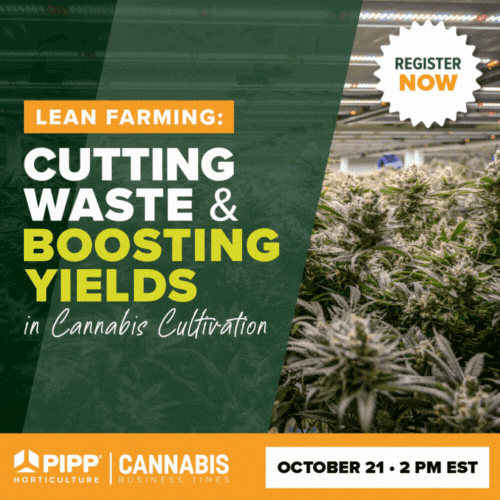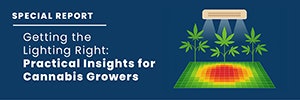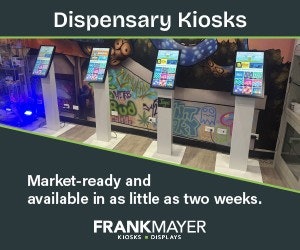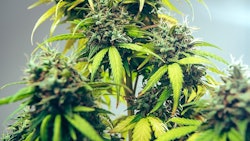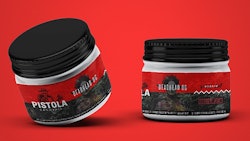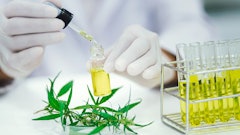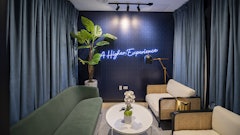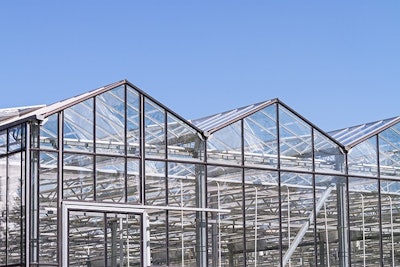
Greenhouses can be as simple as a hoophouse structure or as complex as an indoor cultivation facility—and the key to the designing them, according to Dr. Greenhouse Founder and President Nadia Sabeh, is observing how the plants react to the climate and variables in the environment.
“Go hang out with your plants,” she says. “If you can designate an hour a day or some time to just really sit with your plants and see what they’re doing, I think you could learn a lot about the resilience of your crop and the ability for your crop to respond to the change, to the dynamic environment. We don’t necessarily have to control everything to the hundredth of a decimal point all the time.”
Here, Nadia explains how she and Dr. Greenhouse, an agricultural and mechanical engineering firm that specializes in the design of HVAC systems for indoor plant environments, address HVAC, lighting, automation and more when designing greenhouse facilities for cannabis.
Cannabis Business Times: What are some important design considerations when it comes to a greenhouse’s HVAC system?
Nadia Sabeh: For a greenhouse, it’s a little different than if you were in a warehouse in terms of what you’d need to consider for your HVAC system. Probably the biggest component that is critical for designing and HVAC system is the sun. Solar radiation generates a lot of heat in a greenhouse, and it’s why we call the greenhouse effect the greenhouse effect. Greenhouses are really good at trapping that solar energy, which is great if you’re in a cold climate that’s sunny—then you don’t need to heat as much. But if it’s hot outside, then it can be a challenge to figure out a way to either prevent that sunlight from coming in or [remove] it.
If you’re in a colder climate, the low outside temperatures are also a very critical component because now you need to heat, especially in the Midwest and the East Coast with the blizzards and the polar vortex. How do you heat a greenhouse when it’s -40 degrees outside? That takes a lot of energy. Most likely, the heating systems were not designed for such extremes, so sometimes you just have to muddle through, and you find other ways to protect your crop.
The last thing that’s an important consideration for greenhouses is the outside humidity. We do a lot of projects in Florida and Hawaii and in the South where it’s hot and humid. So, using conventional greenhouse cooling systems like evaporative cooling doesn’t work so well in those climates because we want to remove moisture. We don’t want to add moisture to the greenhouse.
CBT: What are a few lighting factors that must be considered when designing a greenhouse facility?
NS: For lighting, there are two pieces. One is how much light your crop gets, and the other is the duration that your plants are lit by the sun or by supplemental lighting.
For veg plants, we want to have light more than 12 hours a day. At most of our latitudes in the U.S., that’s not a problem, but the more north you go, the less light you get on a daily basis, or the fewer daylit hours you have. And especially in the winter, especially if you’re in Minnesota or in Northern Michigan, you might not get 12 hours of light at all in the winter months. So, then you definitely need supplemental lighting just to prevent your plants from flowering. Everyone knows that 12-hour photoperiod time is the trigger for flowering plants. So, you have these veg plants and you need to be able to keep them lit for longer than 12 hours. Now you move into flower, and you want flowering plants in the summer. Well, now you have [sunlight for] 18 hours a day in the summer—how do you limit the amount of light that you get? That’s when we do light deprivation and use light dep curtains to simulate that 12-hour daylight cycle that will allow plants to flower and stay flowering.
The other piece about lighting has to do with the quantity of light that plants get. We’re not 100-percent sure what the daily light integral (DLI) is that cannabis plants really thrive under. We do know that cannabis is a high-DLI plant. Let’s say you have these shorter days, and you have to give your plant a certain quantity of light. Well, sometimes, there’s not enough sunlight in that period of time to get your plants to grow at their maximum rate. So, that’s when supplemental lighting can really come in handy is one, to play with day lengths, but also to add more quantity of light to your plants on a 24-hour basis.
CBT: What aspects of the greenhouse deal with controlling temperature and humidity, and how can these be most efficiently designed?
NS: Controlling temperature and relative humidity in a greenhouse, again, is challenging or easy depending on where you are in the world. If you’re in a relatively warm and dry climate in Southern California, Arizona or Nevada, you can use evaporative cooling to lower the temperature and even add humidity. A lot of people are so afraid of humidity and they don’t realize when they’re in a really dry climate, you may want to actually add moisture to the air to help your plants grow and to help the vaporization of those terpenes and trichomes. So, adding humidity can actually sometimes be a benefit for greenhouse production.
When you’re in really humid climates, a lot of growers in semi-closed or closed greenhouses basically seal up the greenhouse and are air conditioning the greenhouse in some way. By air conditioning, we can both cool and dehumidify the greenhouse at the same time and prevent that humid air that’s outside from coming inside the greenhouse.
The level of humidity that a cannabis plant thrives under depends a lot on what the temperature is, and even the stage of growth of your crop. I like to talk a lot about vapor-pressure deficit, or VPD, and using that as a gauge of how your plants are going to transpire and lose nutrients from the root up to the leaves and flowers.
The other thing is using shading, and we look at how we can best use shading in the greenhouse so we’re not eliminating too much light. We want a certain quantity of light, but we also want to limit how much cooling we have to do. There’s this balancing point at which we can block some of the sunlight coming in and keep the temperatures down, but also make sure that the plants get enough light and a long enough photoperiod.
The structure of a greenhouse is relatively thin. We have plastic, glass and these clear materials because we’re bringing in some light, so there’s not a lot of opportunity to insulate the greenhouse cover. It’s really easy for heat to transfer in and out through those walls and through the roof. For security reasons, growers are installing greenhouses with opaque walls, and they have the white on black on white material. If there’s an opportunity to insulate those walls, then you will also help to reduce how much heating and cooling you need. But if you just have a clear structure, it’s really hard to prevent that heat from crossing the cover.
CBT: What aspects of the greenhouse do you recommend automating?
NS: The more you can automate, the less labor you’re going to have, which means the lower operating costs you’re going to have. The other thing is, the more touches you have with the plant, not only is that a greater labor expense, but you also have more opportunities to transfer the mold spores or whatever is on your hands to the plant and to the growing facility at large. So, being able to automate is great as a method both for risk management as well as saving on operating costs.
There are a lot of places where you can automate. Commercial greenhouses that are growing tomatoes or lettuce are very sophisticated in the levels of automation that they employ in their greenhouses, and that’s everything from feeding to transplanting and moving the plants to harvesting to monitoring the health of the crop.
Automating your greenhouse can be done at so many different levels and at so many different stages of the growth process, and I don’t think there are a lot of cannabis growers who are really planning their facility for the direction that the crop moves. Think about how the greenhouse is laid out and how the plants move from point A to point B to point C to point D, and how you can reduce the time and reduce the space, so to speak, that those plants need to move from A to B to C to D. That’s a labor efficiency whether a person is handling the plants or whether a robot is handling the plants. There’s a lot of automation going into vertical farms that are growing a lot of lettuce, basically, in a small footprint, and they’re able to cut their operating costs by automating a lot of their systems so that people aren’t reaching in over the plants and that they can grow in a higher density.
CBT: What is one of your favorite tips for designing a greenhouse?
NS: Don’t be afraid of the outside environment when using that to your advantage. People are afraid of bringing in outside air because they’re afraid of pathogens, or they might even be afraid of pesticide drift from other nearby farms, or they’re afraid of humidity, or they just don’t know how to control the environment where the conditions aren’t stable day-to-day or even hour-to-hour or minute-to-minute. That’s where I see a lot of growers who are really successful indoors failing in a greenhouse because they’re just not used to that dynamic environment.
I like to tell greenhouse growers to put on [their] scientist hat and observe and pay attention to how your plants are responding to a cloud moving by or to a slightly deviated temperature or humidity than what your target was. And if your plants look OK, then you don’t have to necessarily do anything. If they start to wilt or they start to show some sort of stress, then if you have to live with the climate that you have or you’re stuck with the HVAC system you have, there may be other things that you can modify, like the frequency of watering, the quantity of nutrients, the water temperature that you’re delivering to the plants or maybe the lighting.
Editor’s Note: This interview has been edited for length, style and clarity.

